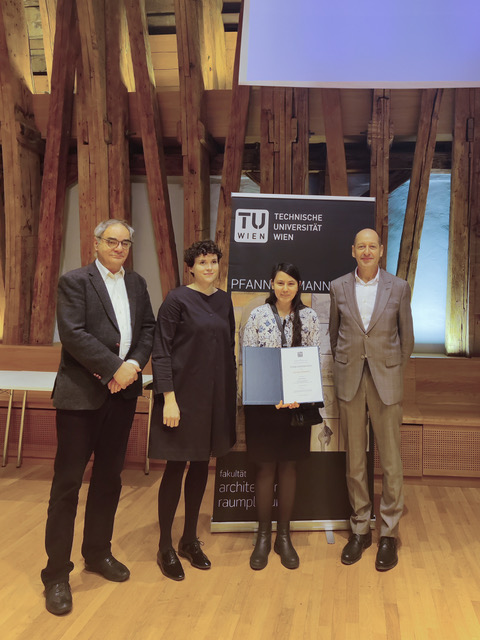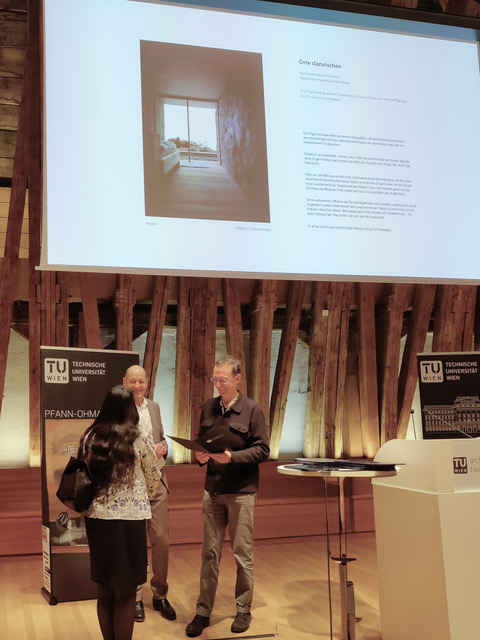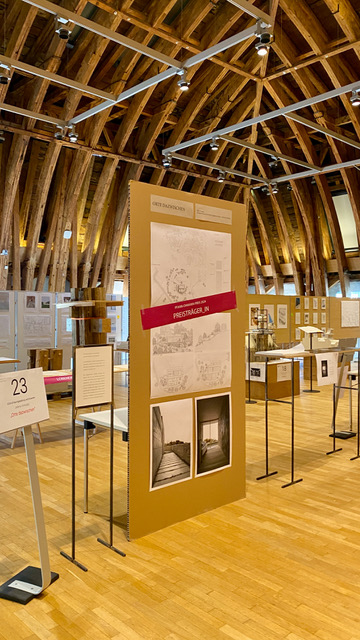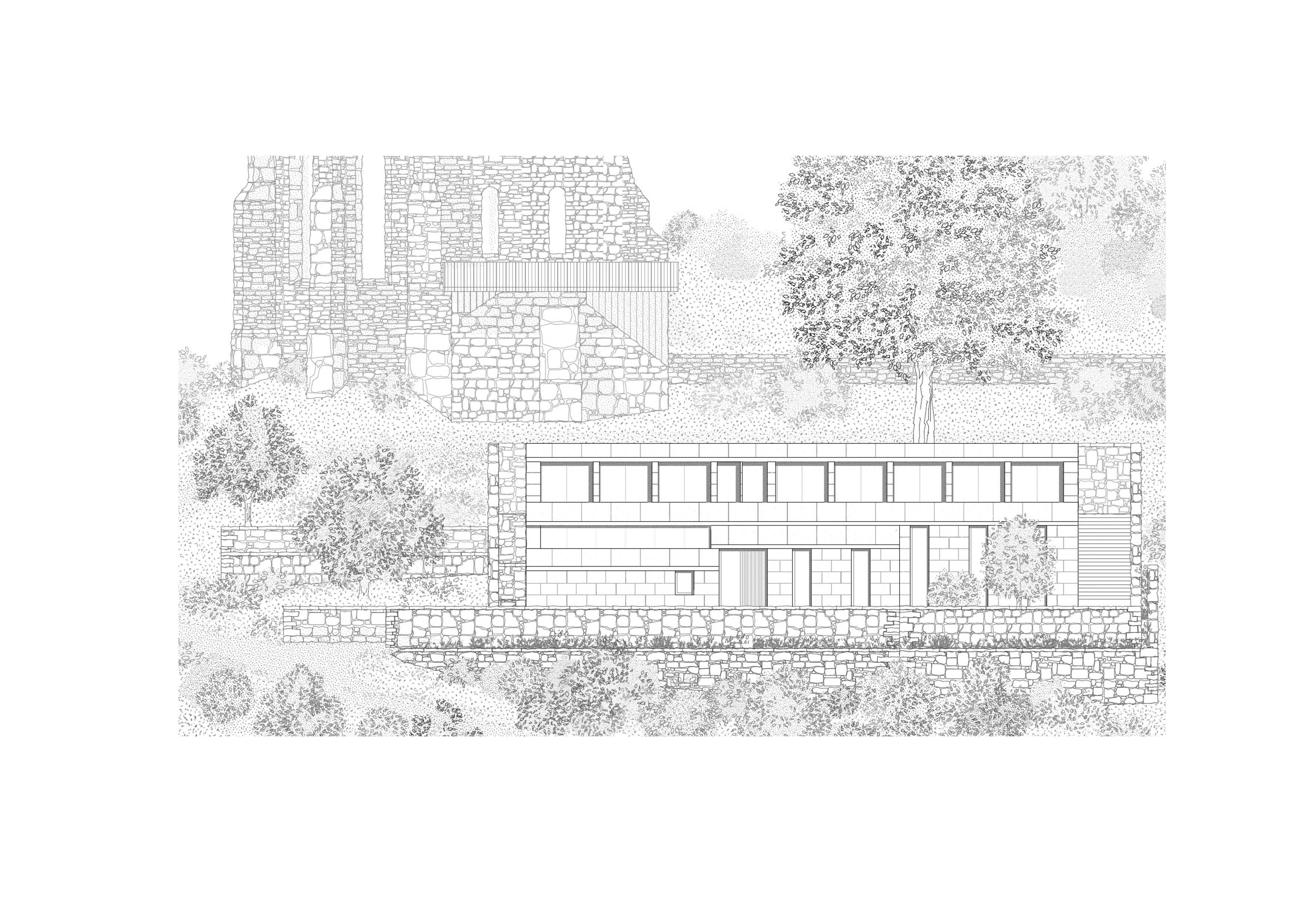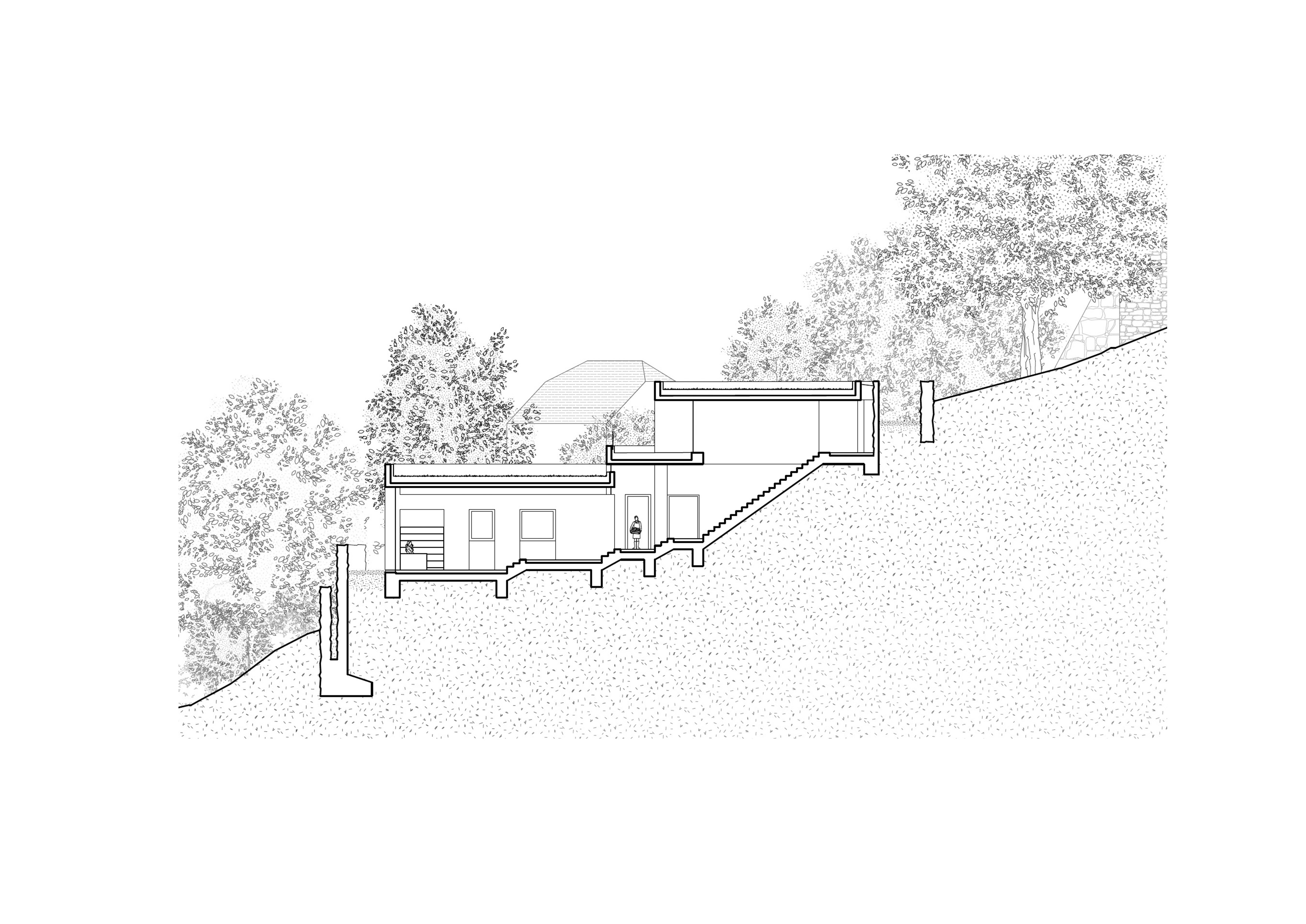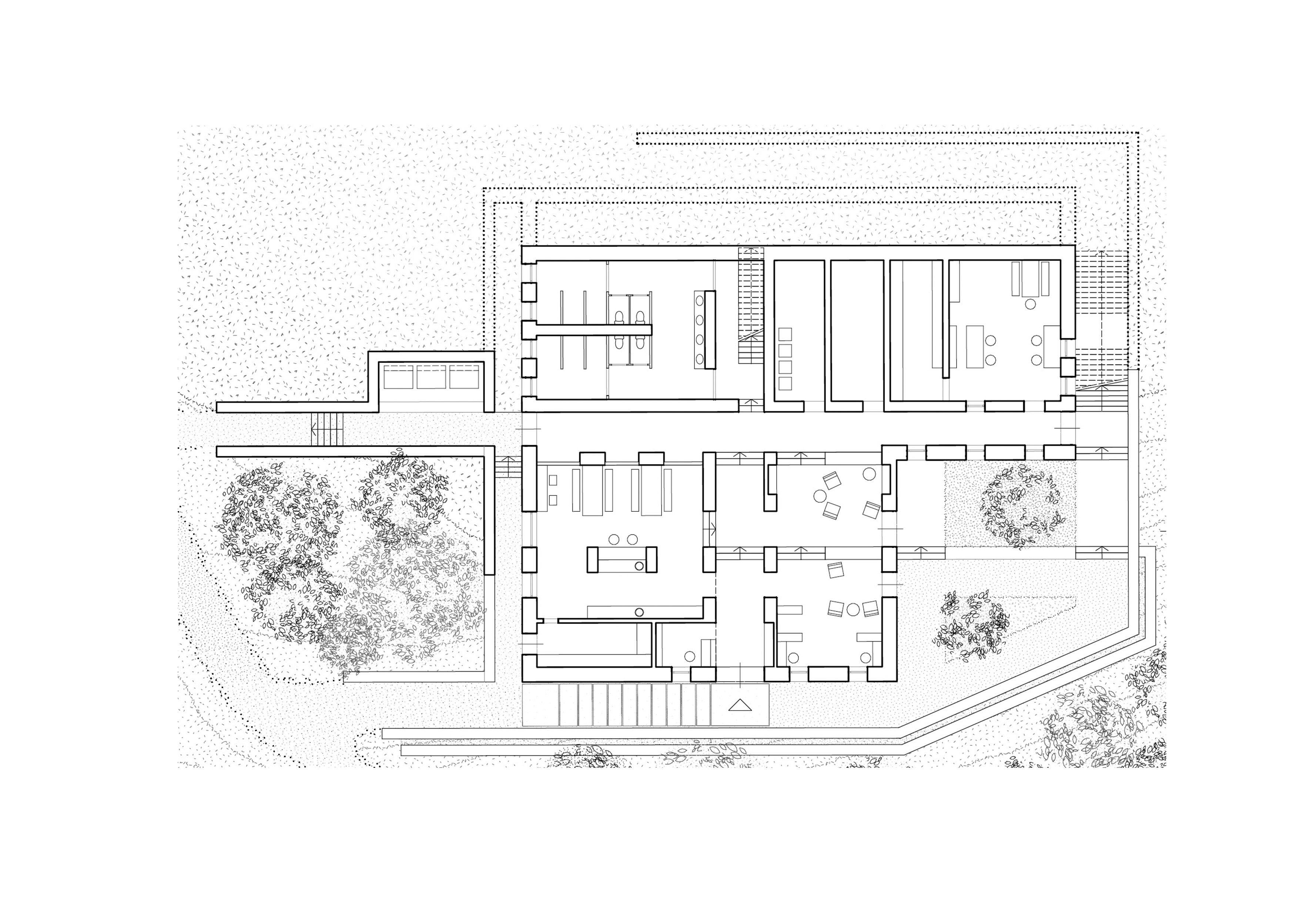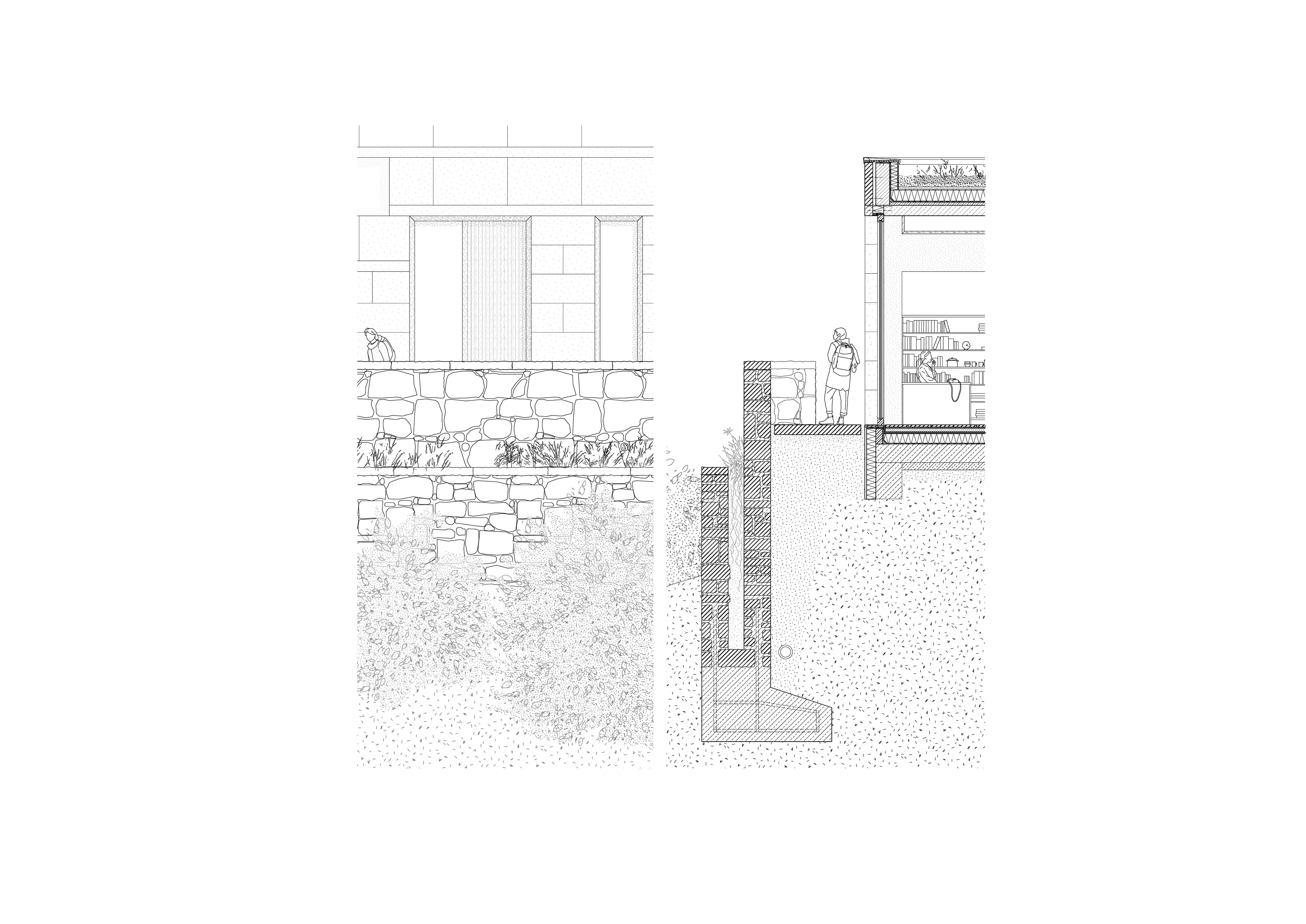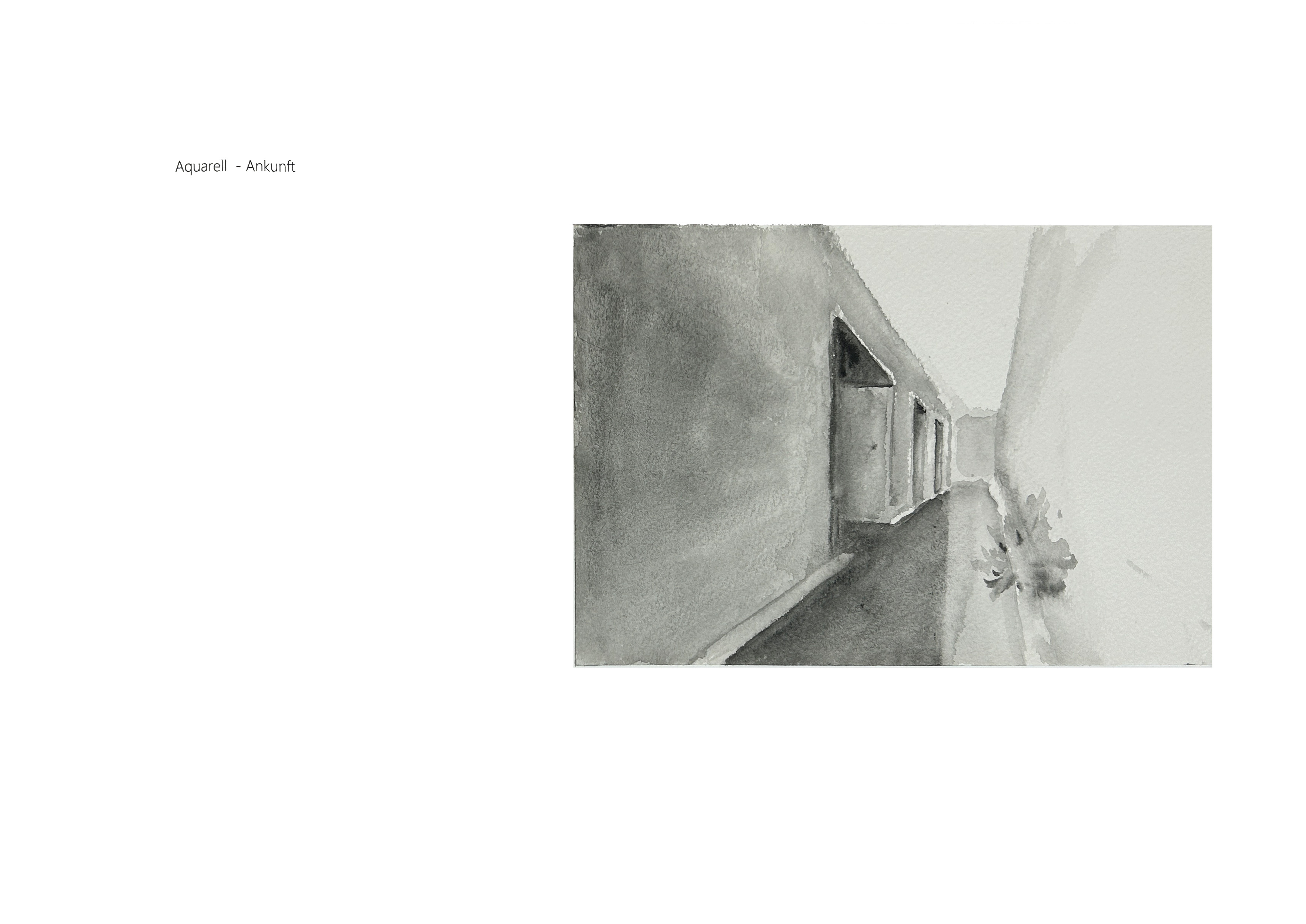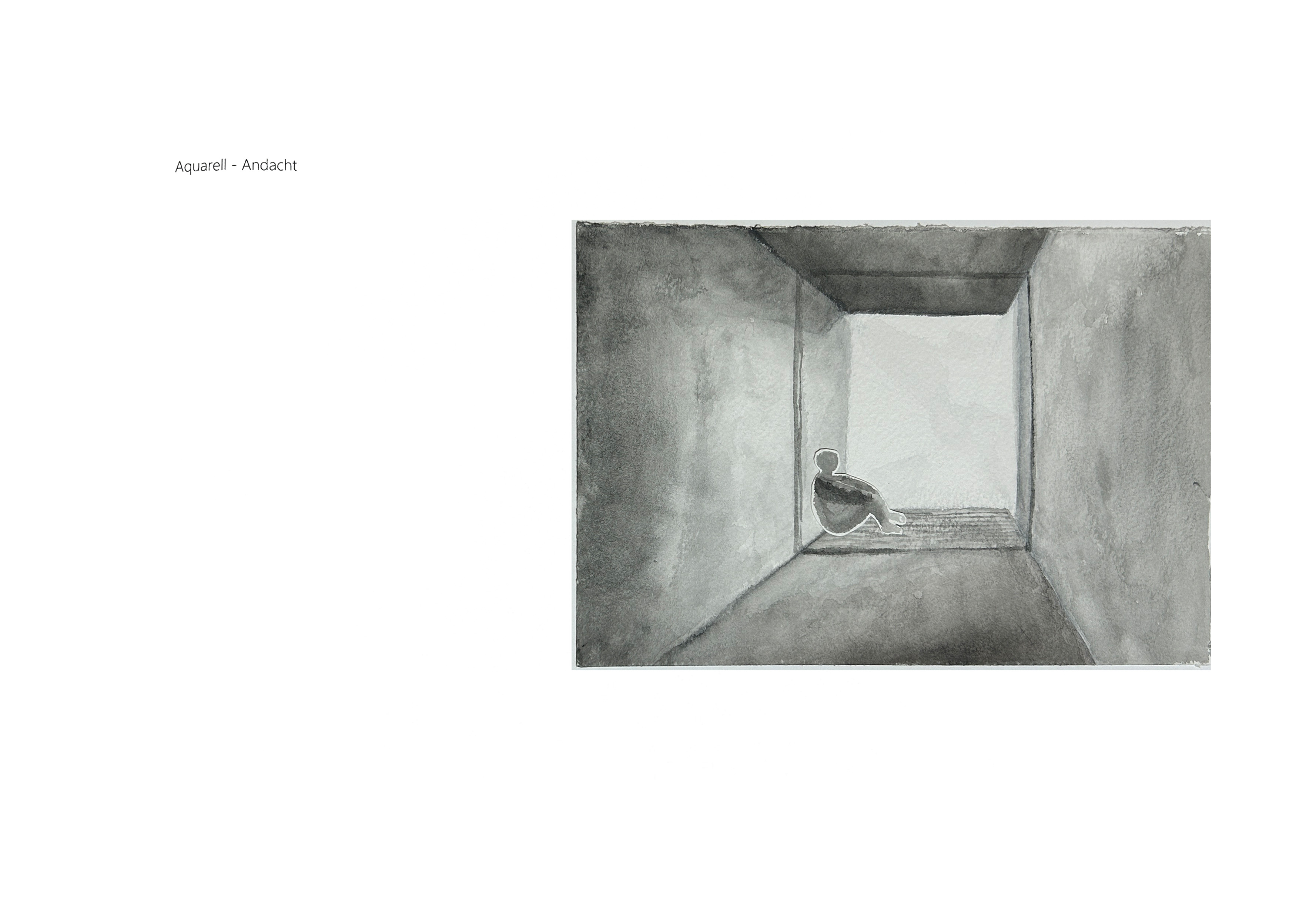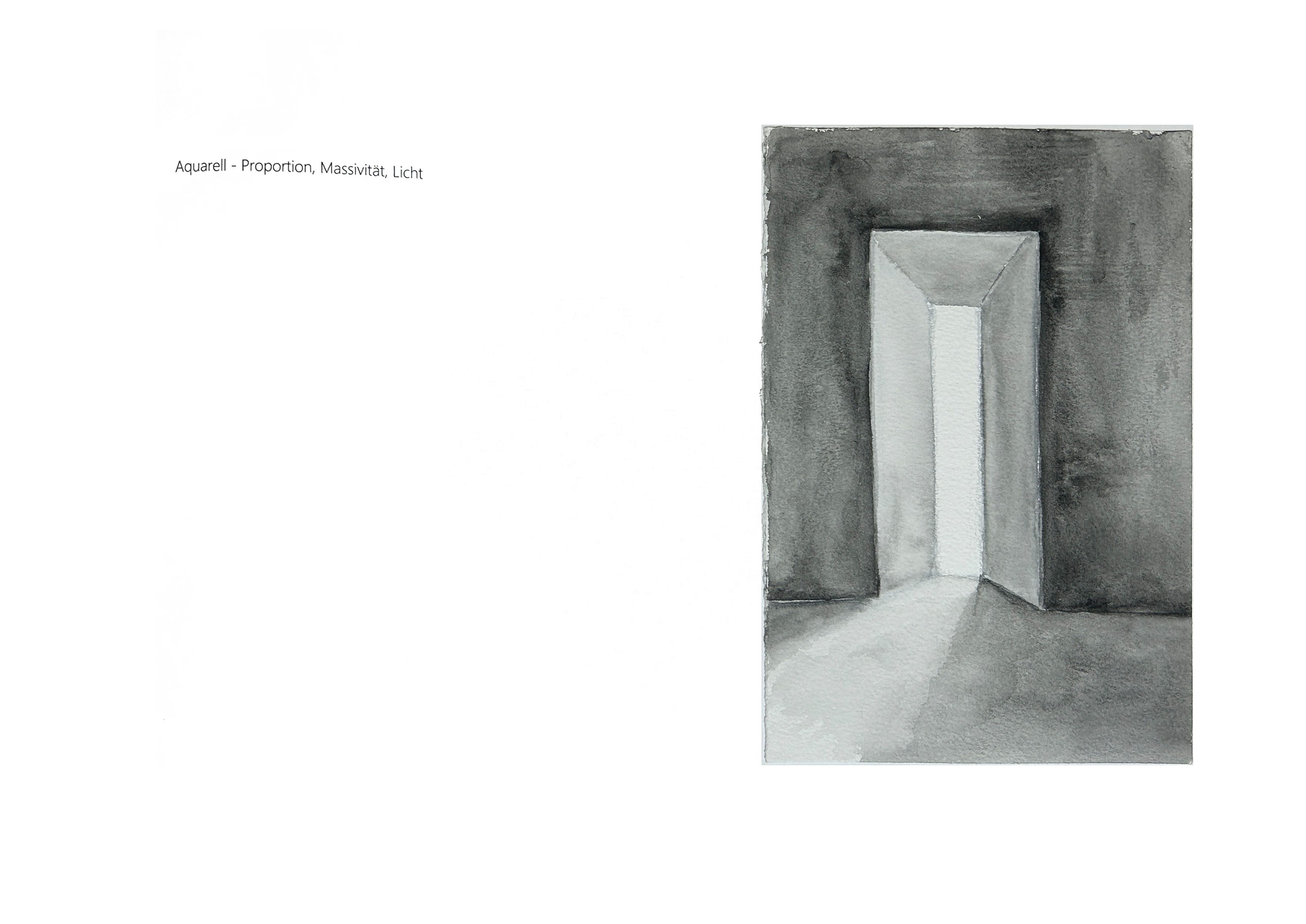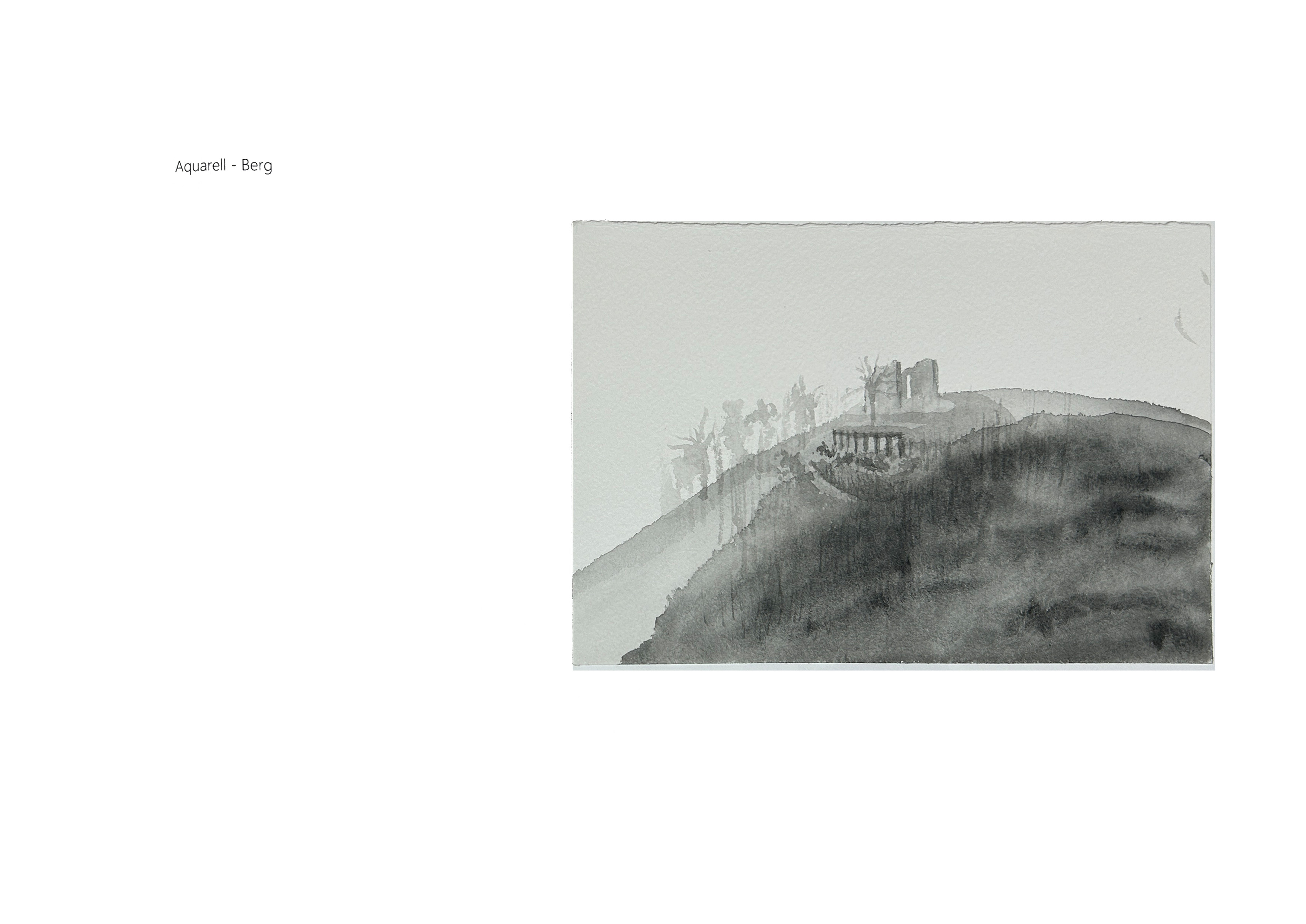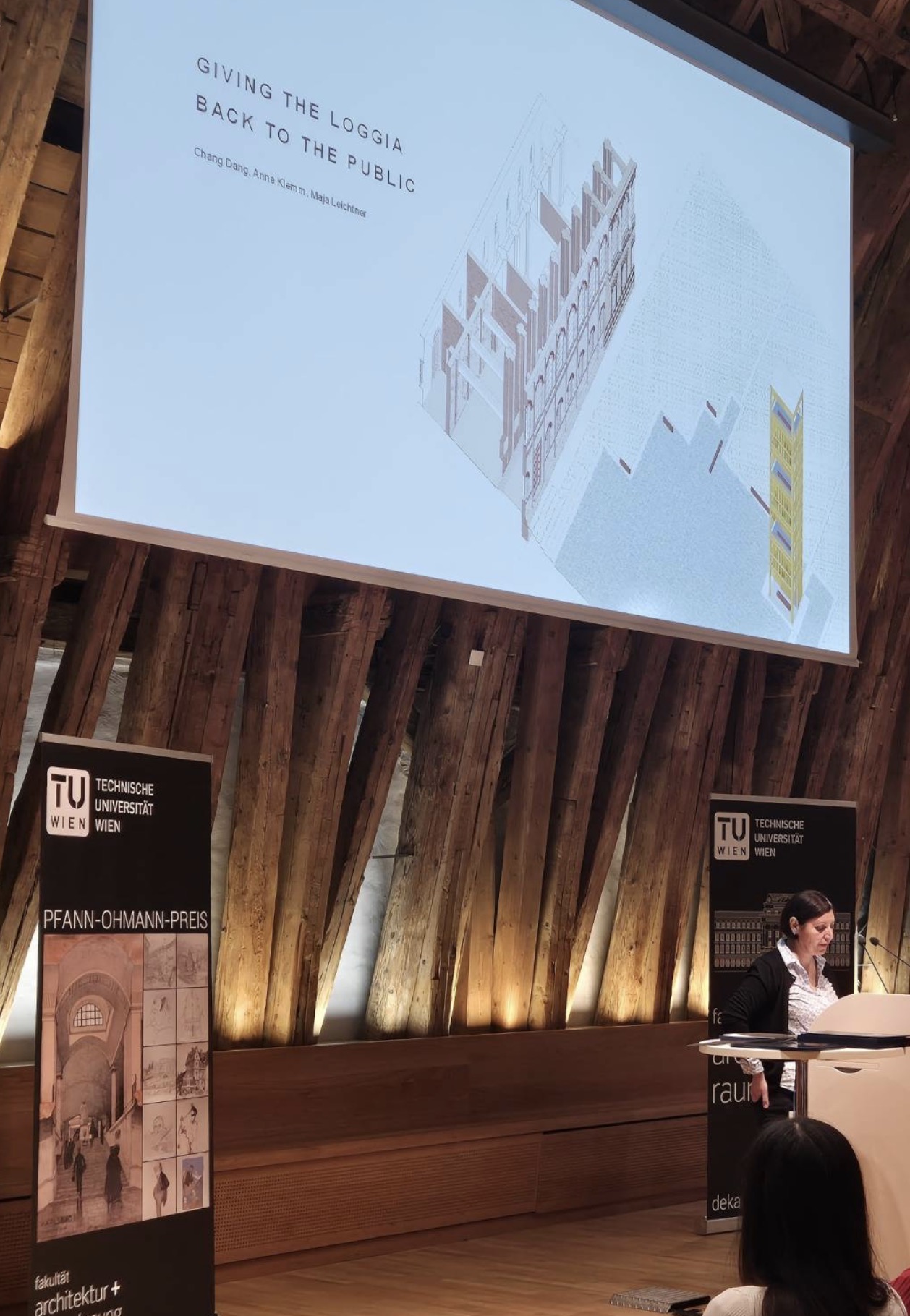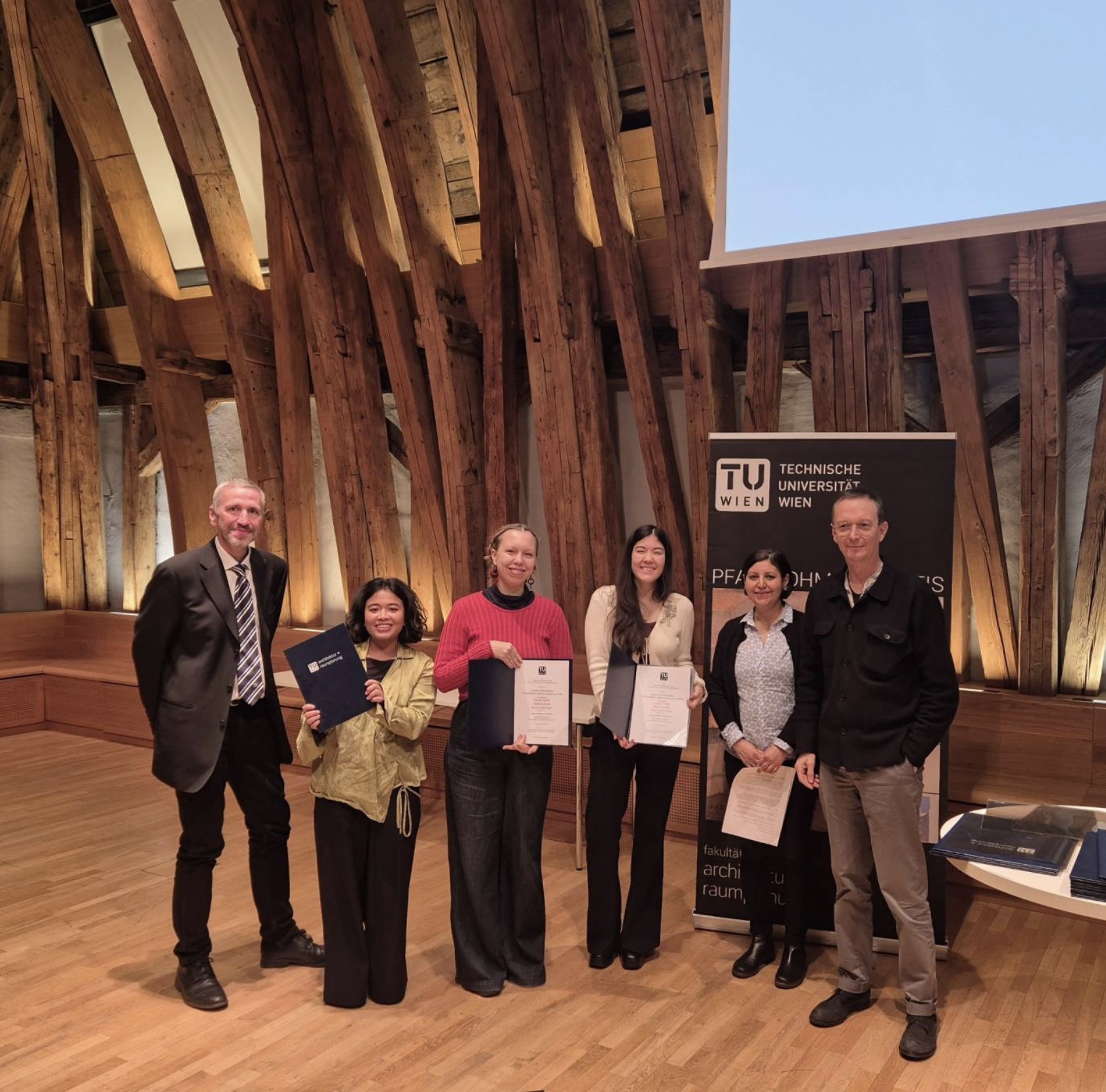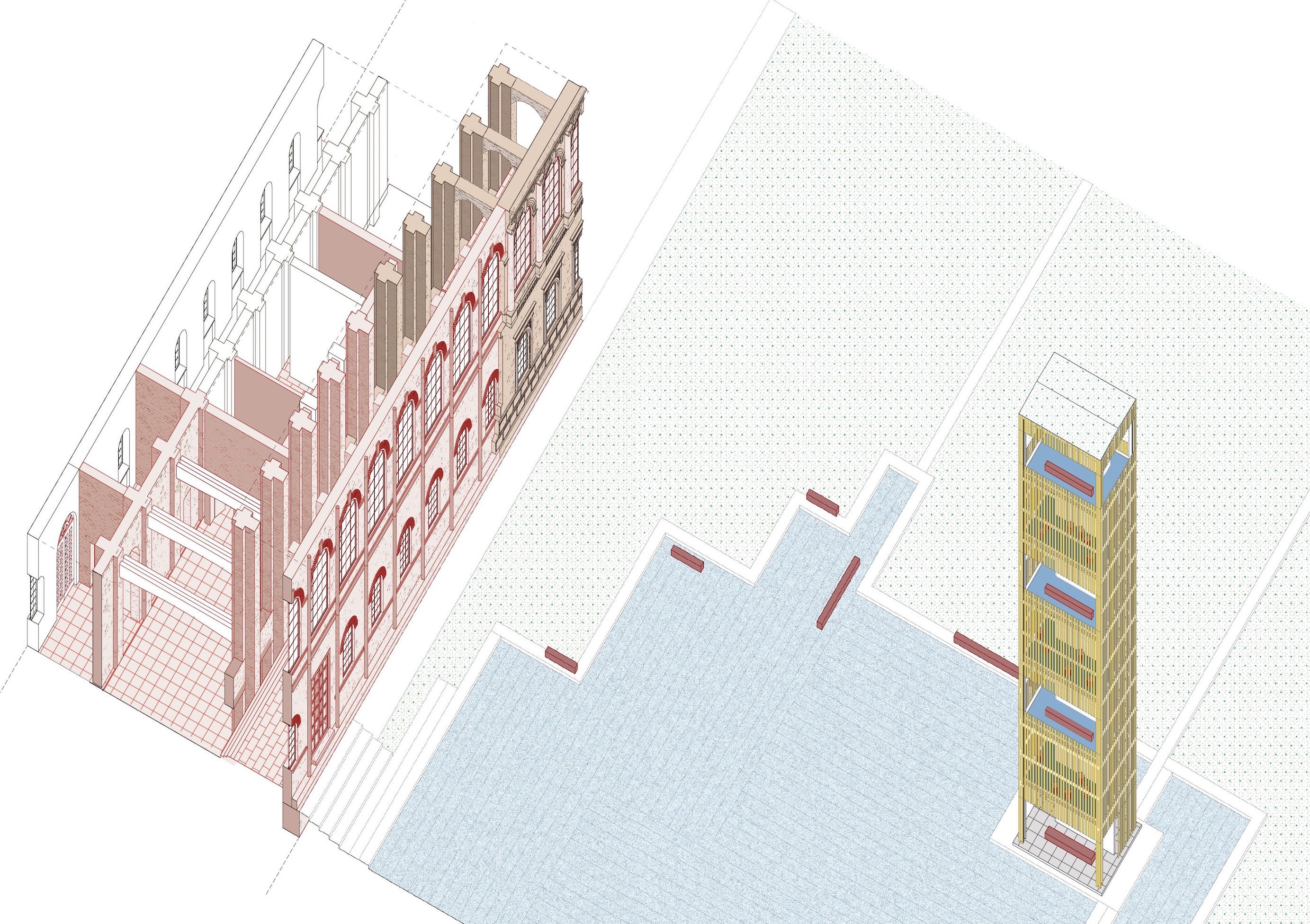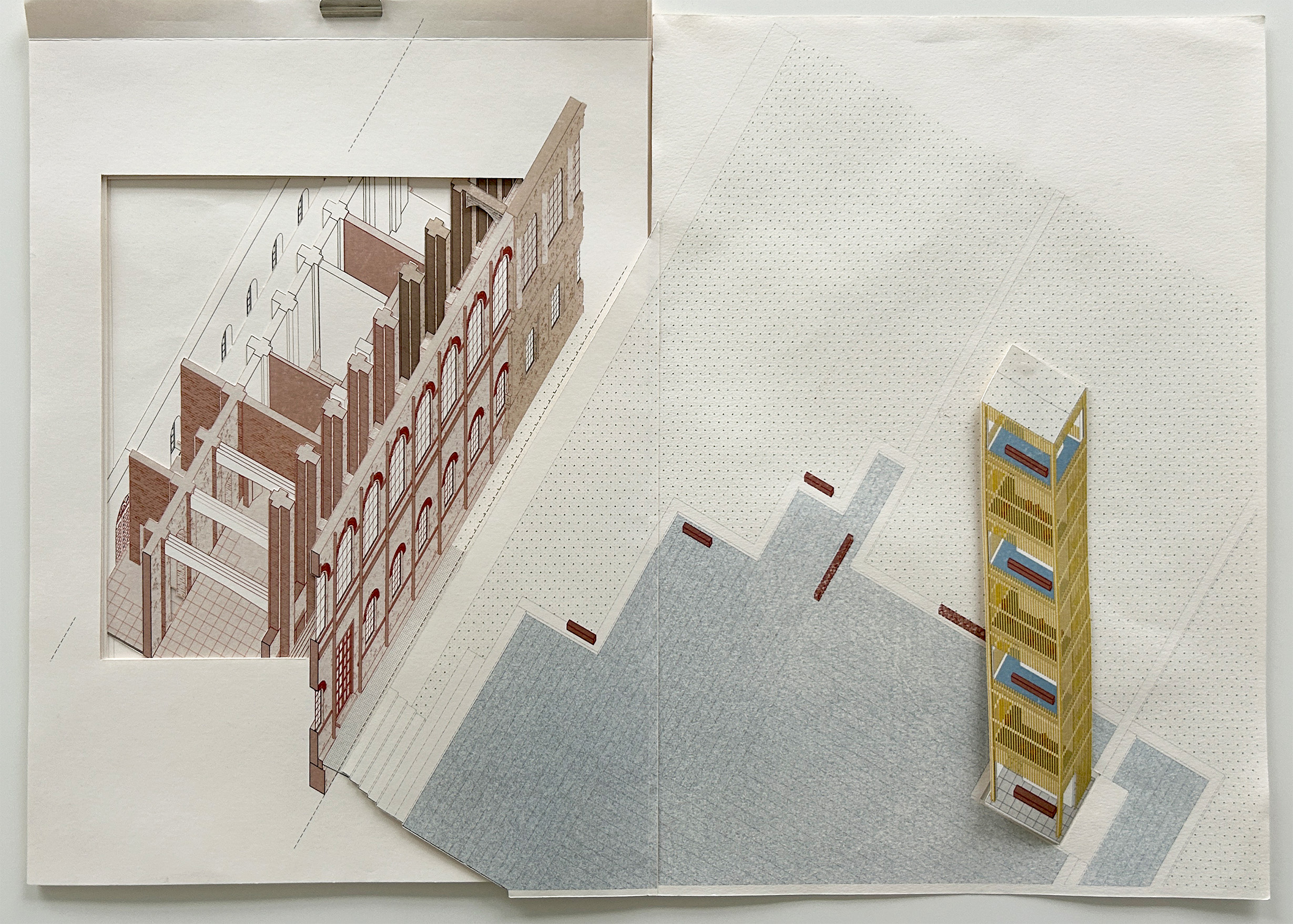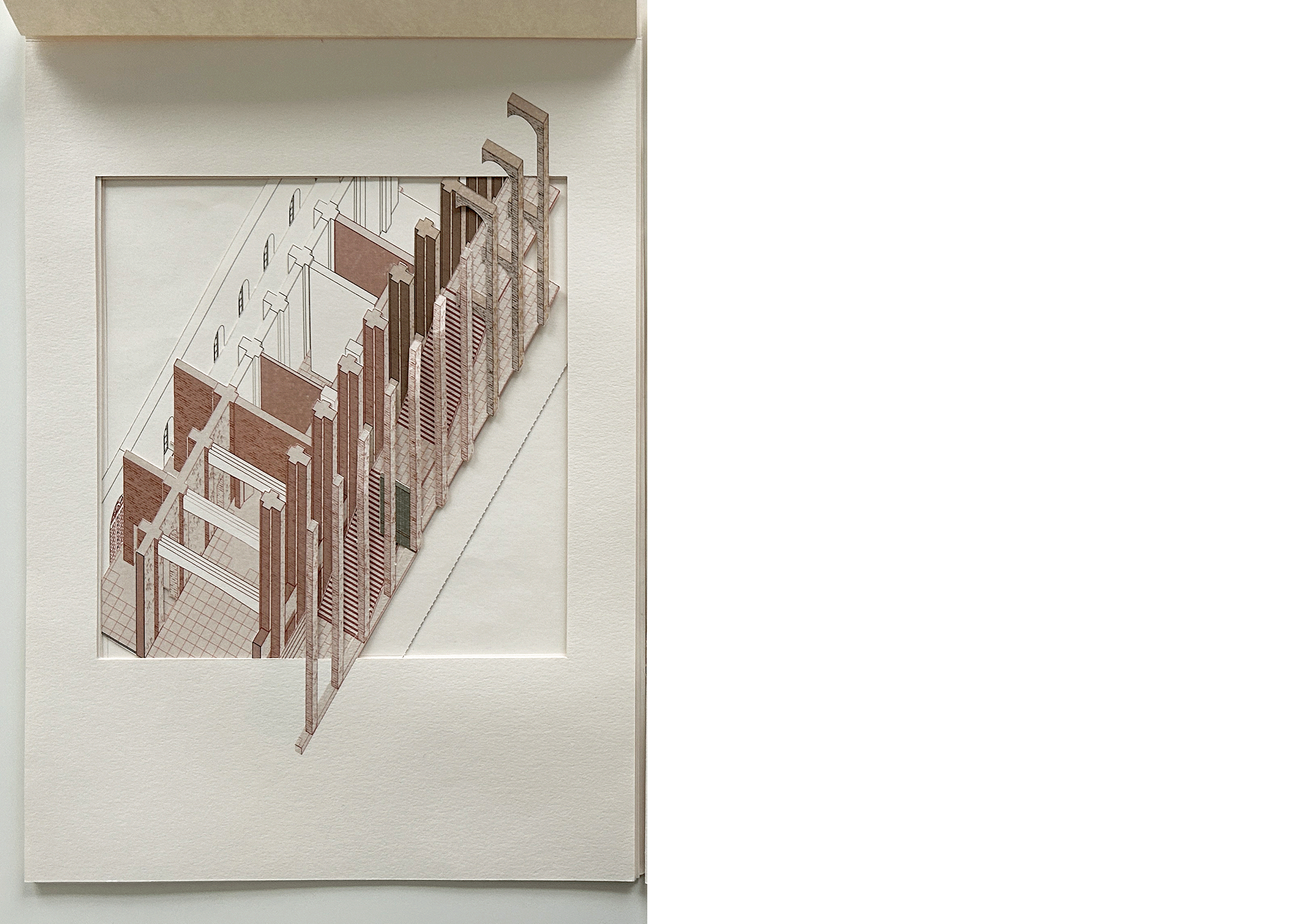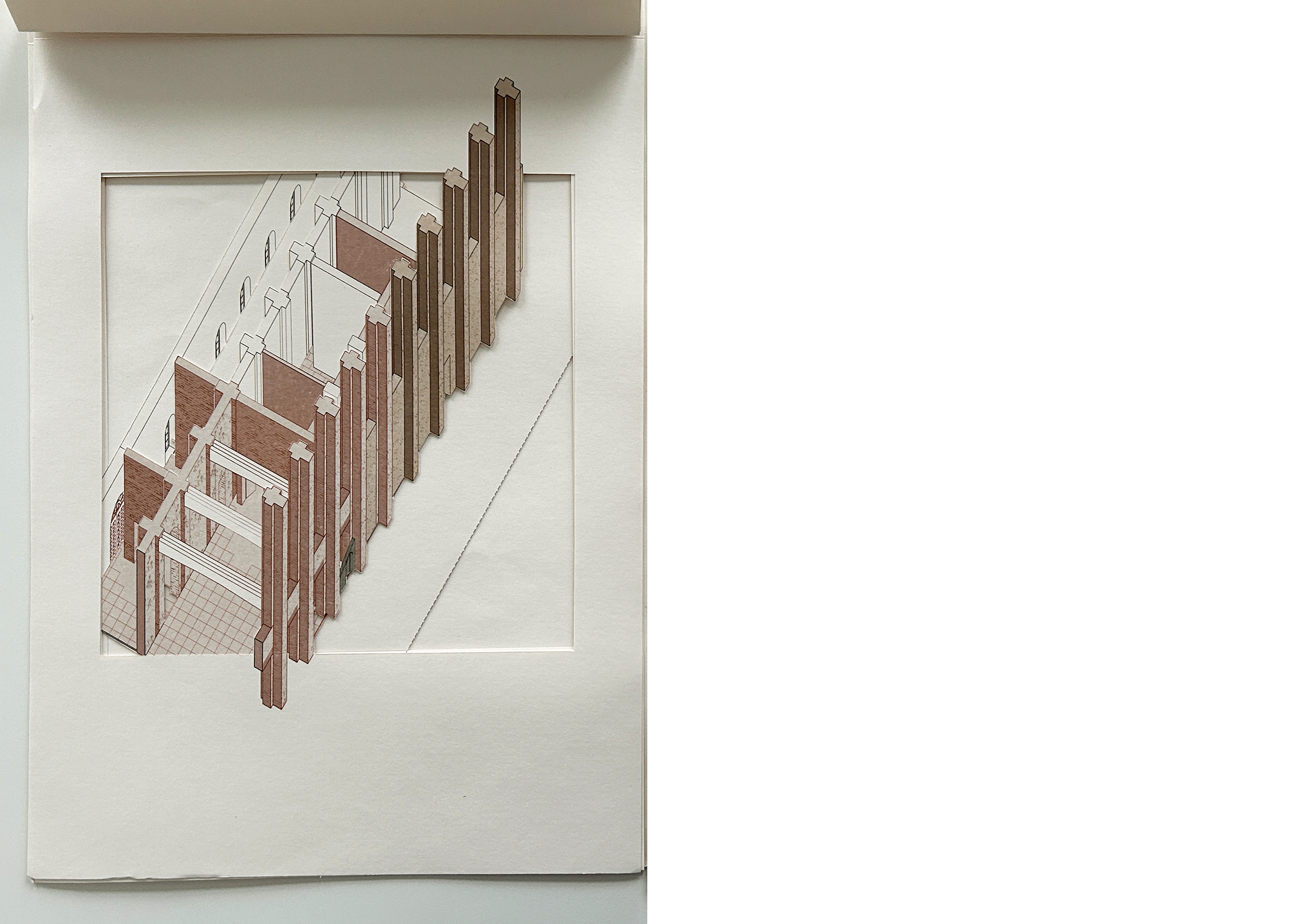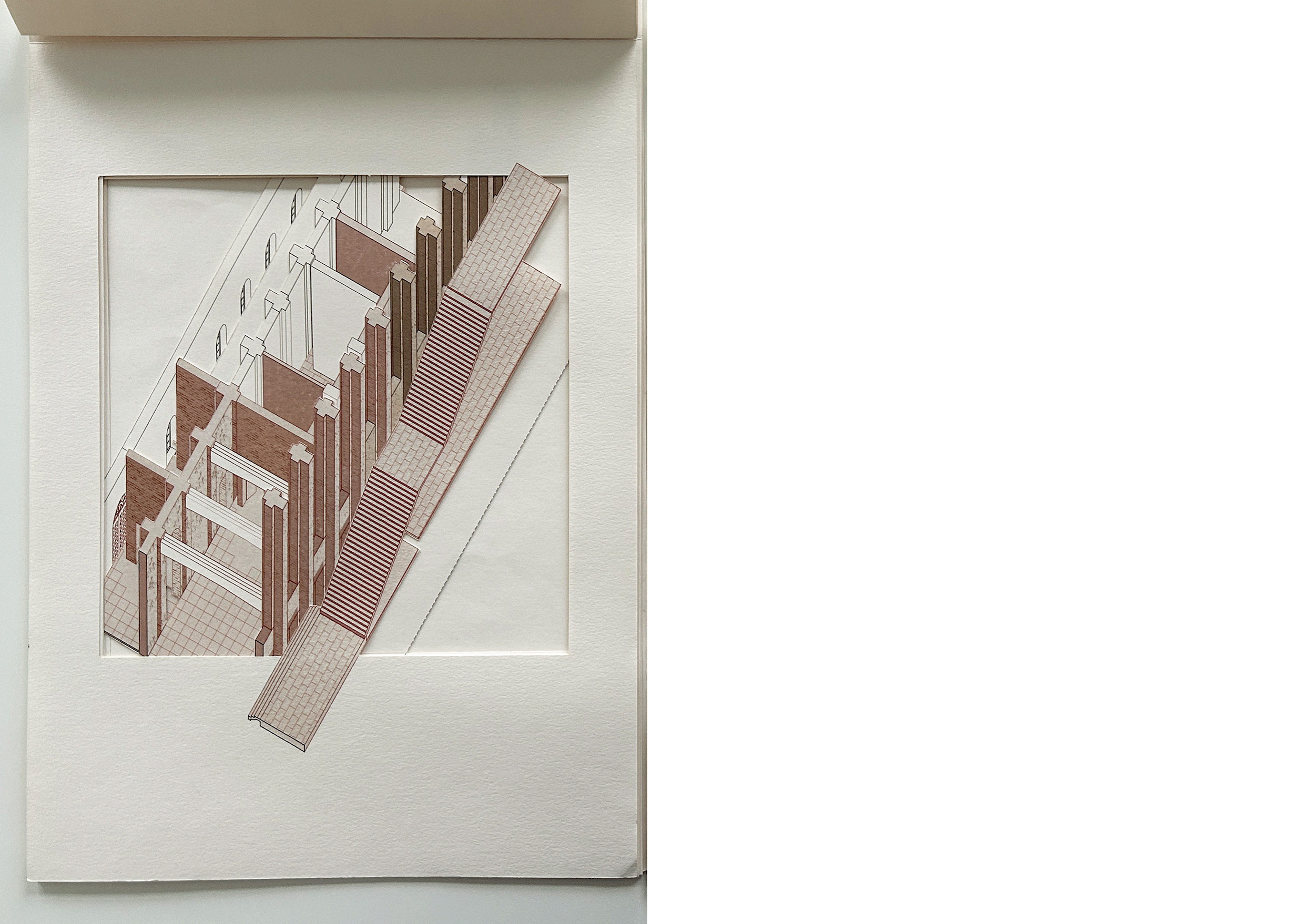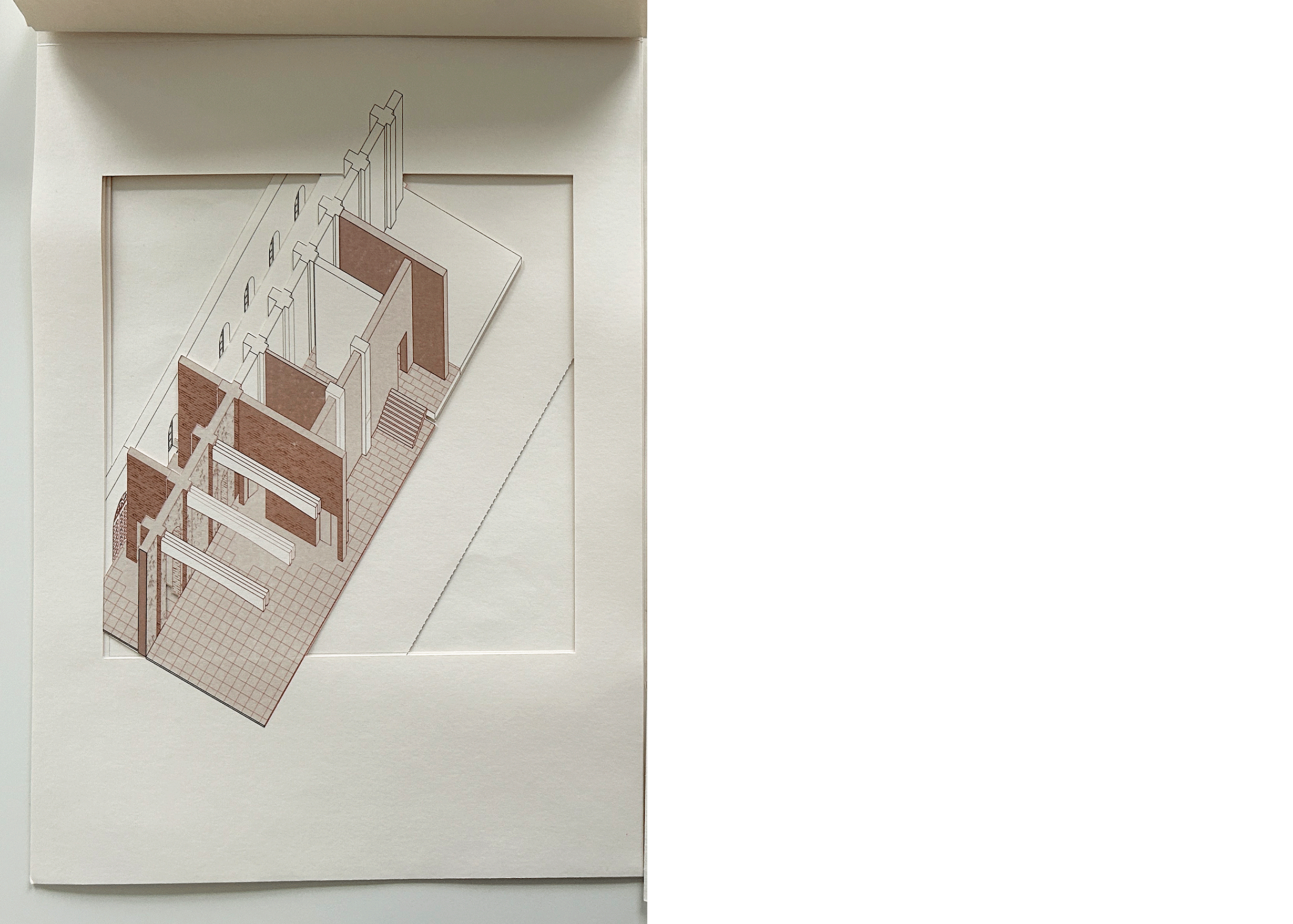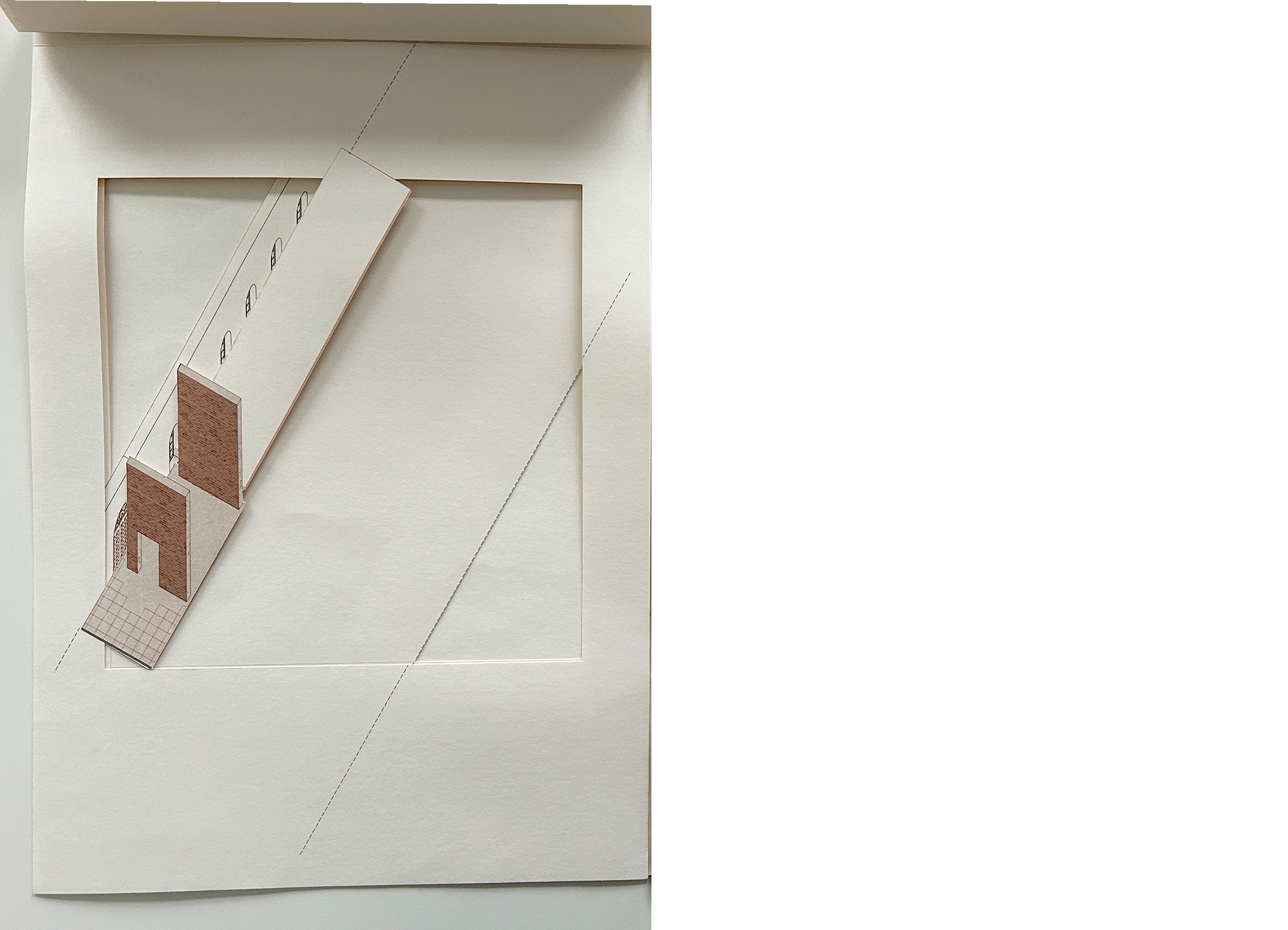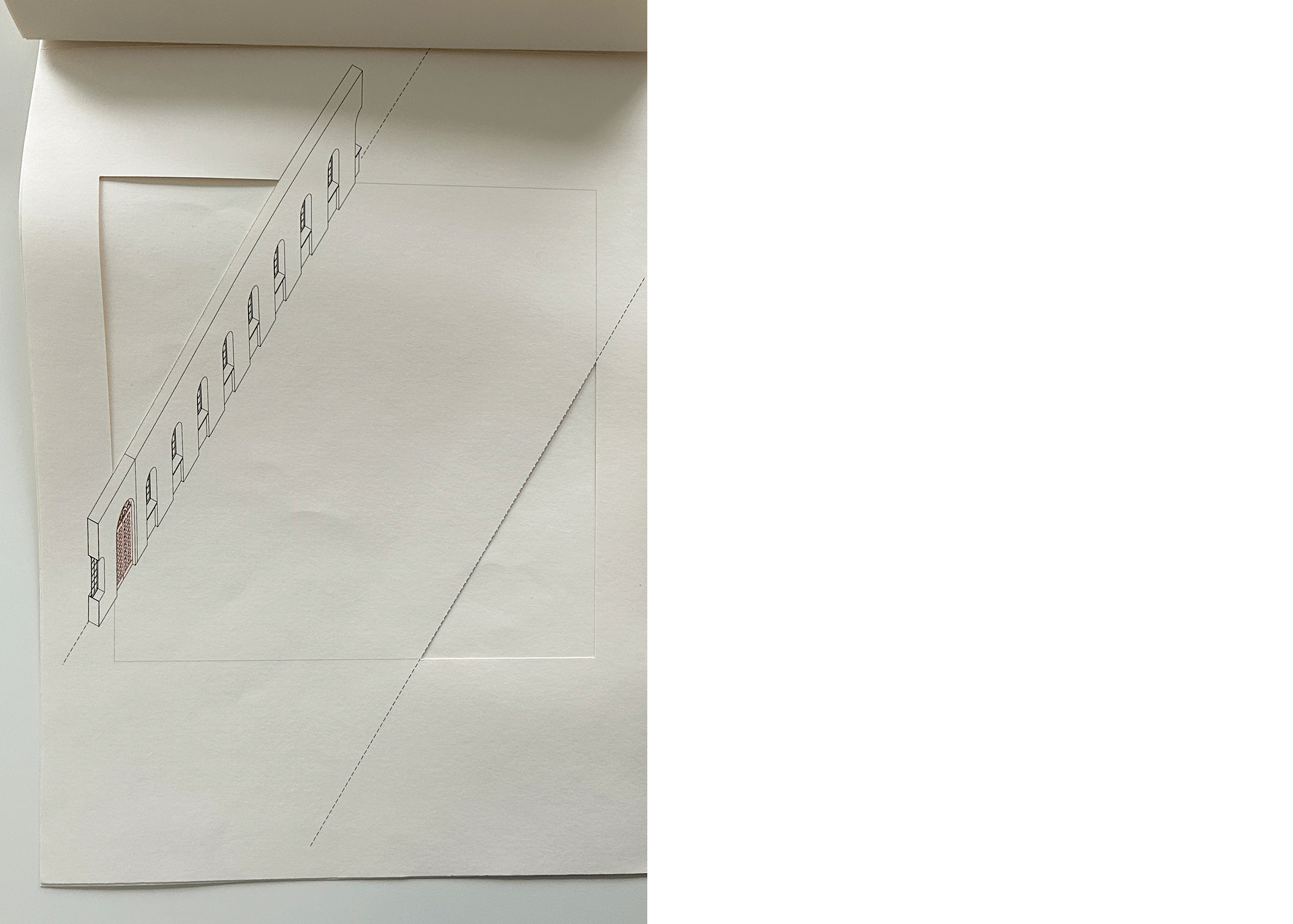Pfann-Ohmann Prize to Jelena Vorkapic “Orte Dazwischen/Places in between”
Foto: Anuscha Alizadeh
Foto: Anuscha Alizadeh
Fotot: Franz Karner
The project ‘Orte Dazwischen/Places in between’ by student Jelena Vorkapic was chosen by the jury of this year’s Pfann-Ohmann Prize as the best work out of 25 nominated submissions. The work was created as part of the bachelor’s programme ‘Lob des Gehens’ in the summer semester 2024 and was supervised by Franz Karner, Johanna Pils and Nott Caviezel. Congratulations on this award!
The pilgrim is led along a stone path, the illuminated walls forming the dim corridor, while his eyes scan the right-hand wall for the door assigned to him. As soon as he unlocks it, his feet are greeted by a wooden floor,
his eyes look ahead and see the view from the hill, clear through the evening light. When he looks from the bed to the non-existent fourth wall, the picture is deeper, the individual elements are smaller, easier to recognise. He moves closer to the window and notices the carpet on the floor. As he sits down, the layers of the picture gain depth, expand and enlarge the outside space. Without getting up, he opens the door and goes outside, leaning against the pleasantly uneven stone wall as he adjusts the rug to sit on it outside. His bent knees finally stretch out until his feet hit the gravel that spreads out from there.
He takes a deep breath and refuses to move for a moment.
Honourable Mention to Chang Dang, Anne Klemm, Maja Leichtner “Giving the loggia back to the public”
© Fakultät für Architektur und Raumplanung
© Fakultät für Architektur und Raumplanung
This work was created as part of the Master’s programme ‘A Room for the public’ in the summer semester 2024 and was supervised by Basma Abu-Naim and Wilfried Kuehn. Congratulations on this honourable mention!
With the Alte Pinakothek Leo von Klenze created the internationally pioneering prototype of a modern picture gallery in architectural history. But even further than the architectural inventions The Alte Pinakothek was inhabiting, it made its influence known on a social scale. The Alte Pinakothek opened its doors to the broad masses and made way for art, education and social interaction to blend within the different social classes. A loggia, which extended across the entire south side of the Pinakothek, was an integral architectonic element of the Alte Pinakothek and symbolizes the restructuring of the public sphere as a state object into a social one.
Giving the loggia back to the public © Chang Dang, Anne Klemm, Maja Leichtner
Giving the loggia back to the public © Chang Dang, Anne Klemm, Maja Leichtner
Giving the loggia back to the public © Chang Dang, Anne Klemm, Maja Leichtner
Giving the loggia back to the public © Chang Dang, Anne Klemm, Maja Leichtner
Giving the loggia back to the public © Chang Dang, Anne Klemm, Maja Leichtner
Giving the loggia back to the public © Chang Dang, Anne Klemm, Maja Leichtner
Giving the loggia back to the public © Chang Dang, Anne Klemm, Maja Leichtner
Giving the loggia back to the public © Chang Dang, Anne Klemm, Maja Leichtner
